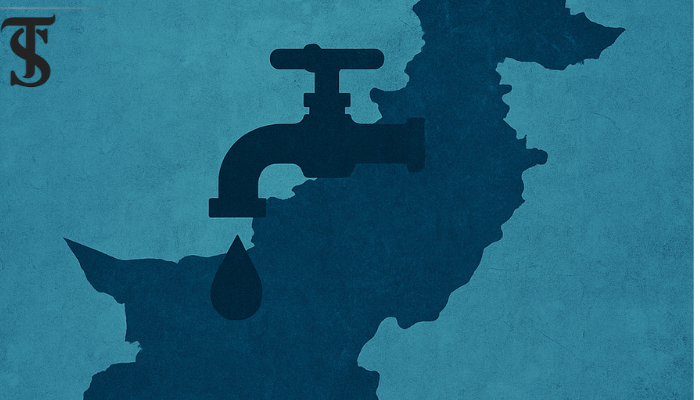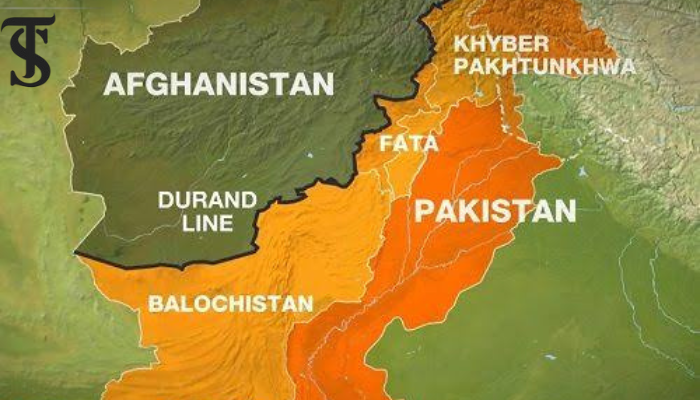Water Scarcity in Pakistan: A Looming Threat to Survival

- Water Scarcity & Agriculture – Pakistan's water crisis threatens agriculture, impacting food security and the economy, as 40% of the population relies on farming.
- Climate Change & Pollution – Industrial waste, deforestation, and climate change exacerbate water shortages, leading to health issues like cholera and malnutrition.
- Policy & Conflict – Inefficient governance, inter-provincial disputes, and tensions with India over the Indus Water Treaty hinder effective water management and conservation efforts.
Water is one of the most vital blessings bestowed upon humanity, and its significance cannot be overstated. Without it, life is unsustainable. However, negligence in its management has led to devastating consequences for many nations, including Pakistan. Several countries face severe issues such as droughts, famines, and serious health concerns due to water shortages. In Pakistan, water scarcity has persisted for years, primarily due to human recklessness and the growing impact of climate change. The country’s water crisis is an alarming challenge, closely linked to the global issue of environmental degradation and climate shifts.
As an agricultural nation, Pakistan heavily depends on water for its economic stability. Agriculture contributes significantly to the country’s GDP, with approximately 40% of the population reliant on agricultural income. However, without an adequate water supply, agricultural production declines, leading to food insecurity. The deteriorating economic conditions in Pakistan have been exacerbated by the ongoing water crisis, affecting both rural livelihoods and national food supply chains. The issue extends beyond just agriculture; it also contributes to malnutrition and stunted growth among children. According to a UNICEF report, nearly 40% of Pakistani children suffer from severe health problems caused by contaminated water. This pollution is not only a consequence of human activity but is also aggravated by climate change.
Water contamination in Pakistan results from various sources, including industrial waste, vehicle emissions, and deforestation. The emission of greenhouse gases from factories, smoke from automobiles, and widespread forest fires have led to the pollution of freshwater sources, making them unsafe for consumption. Consequently, diseases such as cholera, diarrhoea, and other life-threatening illnesses have become increasingly prevalent. The Intergovernmental Panel on Climate Change (IPCC) has repeatedly raised concerns about water scarcity, highlighting the urgent need for global and national interventions. However, the lack of political will in Pakistan has continuously hampered efforts to address this crisis effectively.
The World Bank has long advised Pakistan to construct more reservoirs and dams to preserve water resources. Despite this recommendation, the country has lagged in implementation. During the tenure of Ayub Khan, Pakistan built several major and small dams with the assistance of the World Bank, leading to the Green Revolution. However, over time, water mismanagement, pollution, and the effects of climate change have worsened the situation. The lack of sustainable planning and proactive policies has left Pakistan vulnerable to severe water shortages.
In addition to domestic mismanagement, Pakistan’s water crisis is also influenced by regional conflicts. Since 1947, Pakistan and its neighbouring rival, India, have been entangled in water disputes. The Indus Waters Treaty, mediated by the World Bank, was established to ensure fair water distribution between the two countries. Unfortunately, repeated violations of the treaty have intensified tensions. India’s construction of the Kishanganga and Baglihar dams has reduced Pakistan’s water supply, exacerbating its already critical shortage. The fact that much of Pakistan’s water originates from Indian-controlled Kashmir has made the region a focal point of geopolitical tensions, with water sharing remaining a contentious issue.
Domestically, Pakistan also faces interprovincial disputes over water distribution. Sindh, as a lower riparian province, has frequently accused Punjab, the upper riparian province, of violating national and international regulations regarding water allocation. The long-standing controversy surrounding the construction of the Kalabagh Dam further illustrates these disputes. While proponents argue that the dam could significantly alleviate Pakistan’s water crisis, opposition from Khyber Pakhtunkhwa (KPK) has stalled its development. KPK fears that the dam’s construction could lead to the submergence of agricultural lands and an increased risk of flooding in the province. These disagreements highlight the urgent need for consensus-building and effective policy implementation to ensure equitable water distribution across Pakistan.
Climate change has further aggravated water-related issues, causing unpredictable precipitation patterns and accelerated glacial melting. This has led to devastating floods, such as the catastrophic 2022 floods, which broke historical records in terms of destruction. These floods not only contaminated drinking water but also resulted in massive crop losses, disrupting food supply chains and worsening the country’s economic instability. Poor urban planning has further contributed to water scarcity by contaminating natural water sources and reducing water retention capacities in cities.
Another critical factor exacerbating the crisis is Pakistan’s rapidly growing population. The Indus River System Authority (IRSA) has raised concerns about worsening water shortages due to the rising demand for water resources. According to global standards, at least 24% of a country’s land should be covered by forests to maintain ecological balance. However, Pakistan’s forest cover stands at a mere 4%, painting a grim picture of environmental degradation. Widespread deforestation has led to reduced rainfall, soil erosion, and desertification, ultimately contributing to water shortages and food insecurity.
The international community has recognised the urgency of addressing climate change and its impact on water resources. The 2016 Paris Agreement emphasised that global temperatures have risen by 2°C compared to the previous century, which is expected to exacerbate water crises worldwide. Despite being a signatory to this agreement, Pakistan has failed to implement strict measures to combat climate change effectively. Similarly, at international climate summits such as COP27 and COP28, Pakistan secured financial aid from donor nations to mitigate climate-related challenges. However, corruption and mismanagement have obstructed the proper utilisation of these funds, limiting their impact on the ground.
While Pakistan has taken steps to address the crisis, such as the construction of Diamer and Mohmand dams, more needs to be done to ensure long-term water security. The preservation of water resources requires the development of additional reservoirs and a commitment to efficient water management strategies. National efforts must be reinforced through policies promoting sustainable practices, advanced irrigation techniques, and responsible water consumption.
In conclusion, Pakistan’s water crisis is one of the most pressing challenges the country faces today. Addressing it requires a multi-faceted approach, including political commitment, technological advancements, and public awareness. Political leaders must ensure good governance and policy implementation to tackle the issue effectively. The use of artificial intelligence to predict weather patterns and monitor water levels can significantly improve water management. Moreover, adopting modern irrigation techniques such as drip irrigation and laser levellingg, with assistance from countries like China and the UAE, can enhance agricultural efficiency.
Resolving interprovincial disputes over water distribution is crucial for national stability. The government must ensure compliance with established regulations to maintain harmony between provinces. On an international level, strengthening the Indus Waters Treaty and engaging in diplomatic negotiations with India can help resolve water-sharing conflicts.
Furthermore, individuals must play their part in conserving water by adopting responsible usage habits. Rainwater harvesting should be encouraged at the household level, and nationwide afforestation initiatives must be undertaken to restore ecological balance and promote rainfall. By fostering national cohesion and collective responsibility, Pakistan can mitigate the severity of its water crisis and work towards a sustainable and water-secure future.

Mian Muaiz Gul
The author is a freelance writer.





